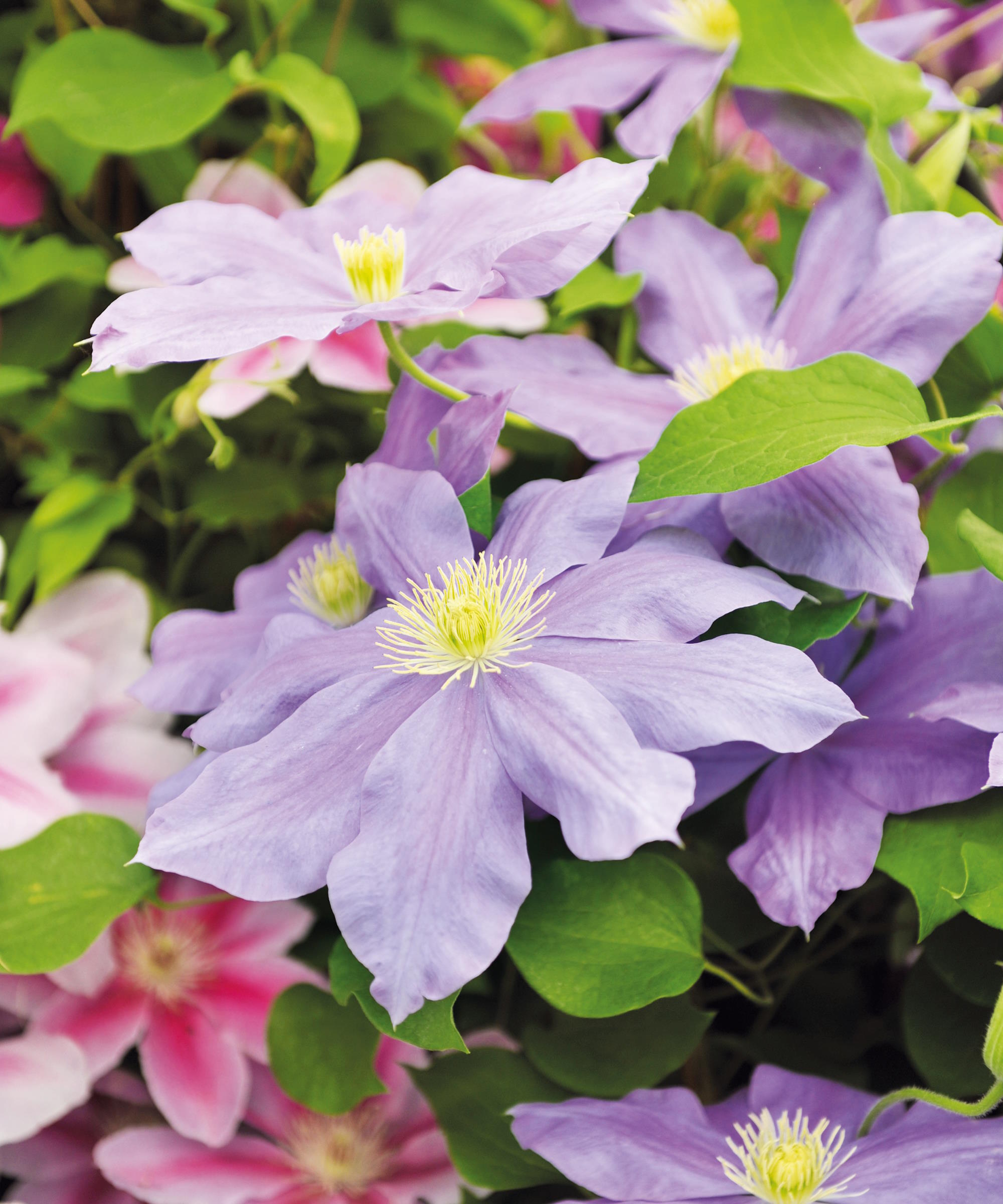When to cut back clematis for winter – or should you be trimming at all ahead of cold weather?
Clematis pruning can be a bewildering topic for many - discover when in winter you should actually be cutting back


Clematis need annual pruning to keep the plants under control and produce a fantastic display of flowers each year. There are many gardeners around the world, however, who are unsure of how to prune clematis and when to cut back the plants.
This is because clematis are classified into three different pruning groups, depending on their flowering, and trimming these climbing plants at the wrong time is a pruning mistake that can potentially rob you of a year’s worth of flowers.
There are many plants that are recommended to be cut back for winter, for reasons such as neatening the appearance and even help to prevent diseases. So is clematis one of those that should also be cut back ahead of the incoming winter months? Does this need to be a job to add to your fall gardening checklist?

Different clematis bloom either on last season's wood or the current year's growth
Should clematis be cut back for winter?
The answer to the simple question of whether you cut all clematis back for winter is no, you do not.
Only 'Group 3' types of clematis do need to be cut back in winter, but not before the onset of winter. There is no trimming required to actually prepare your clematis for the winter weather ahead.
These flowering climbers, however, do hugely benefit from being cut back in the latter part of winter to avoid ending up with a big tangled mess of both old and new stems.

Some types of clematis need light pruning, while others are cut back harder
When to cut back clematis in winter
When you are growing clematis in your backyard, it is vital to know the clematis variety you are growing and which of the three pruning groups your type fits into.
Design expertise in your inbox – from inspiring decorating ideas and beautiful celebrity homes to practical gardening advice and shopping round-ups.
It is the Group 3 types of clematis that need to be cut back hard every winter. These varieties flower on the current year’s growth, which needs to be removed ahead of the plant putting on a new flush of growth to carry the next year’s flowers. The exact time for when to prune will be dependent on your climate and the date of your last frost, though the window to cut back tends to run from late winter onwards.
Vianne Siu, creative director at Flower Actually, claims that Group 3 clematis are ‘the ideal candidates’ for winter pruning as they ‘thrive when pruned hard’ ahead of the new growing season starting in spring.
‘For Group 3 clematis, the optimal time for pruning is late winter or early spring, just as the plant starts to show signs of new growth. This timing helps the plant to recover quickly and enter the growing season with vigour,’ says Vianne.
‘Pruning encourages new growth, leading to a healthier plant with more blooms. It also helps maintain the plant's shape, prevents overgrowth, and ensures flowers are visible and not hidden within a tangle of stems.’
The stems of Group 3 clematis will die back after flowering and will need untwining from any supports they have been growing on. ‘These varieties should be pruned back hard so that the stems are only 12 inches above the ground,’ explains Annette Hird, expert gardener at Easy Urban Gardens. Cut each stem back to an emerging bud, taking care not to damage any developing buds.
While it is the Group 3 clematis that are most in need of being cut back in winter, those in Group 2 can also require light pruning in late winter. This involves taking a pair of clean and sharp pruning shears to fully remove any dead or weak growth and trim other stems back to a pair of strong buds. A good-quality sharpening tool, like this Felco Sharpening Tool available at Amazon, is essential to help clean pruning shears sharp and makes any cutting back simpler.
If you prune the plant too early, such as in late fall or early winter, it can encourage a late flush of weak growth to be produced. This will be easily damaged by the winter frosts and can actually lead to the overall cold-hardiness of the plant to be reduced. The decaying growth can also encourage potentially harmful bacteria and fungi.

Vianne Siu is the Creative Director at Flower Actually. She is an experienced horticulturalist and leads a team of passionate florists who create new and innovative designs.

Annette Hird has an Associate Diploma in Horticulture and is an urban gardening expert. She has worked as a professional propagator and managed, maintained and improved many urban and rural gardens. She also enjoys growing her own fruit, vegetables, herbs and flowers as well as many different types of ornamental plants.
FAQs
How do you prepare a clematis for winter?
Most clematis are fully hardy and there is a long list of cultivars available to grow in colder US hardiness zones. While cold climates can make growing some of these fast-growing flowering vines more of a challenge, there are measures you can take to help protect the plants from potentially damaging frosts and snow.
Morgan Kielisch, from McKay Nursery Company in Wisconsin, recommends that you put ‘a nice layer of organic mulch’ around the base of the clematis to insulate the roots from the extremes of winter, saying: ‘Mulch helps retain soil moisture and regulate temperatures. We recommend about four inches of mulch. Avoid applying too much near the base of your clematis. The layer should be an even thickness.’
If you are growing clematis in pots as part of a container garden, then the roots will be more susceptible to cold. You can consider moving pots to a protected space, or wrap the pot with burlap, fleece, or protective covers such as these winter pot covers available at Amazon.
Any checklist of fall gardening jobs to do is likely going to be long enough, without adding cutting back clematis onto it.
There are plants that do need trimming ahead of the cold weather, including cutting back sedums for winter and cutting back black eyed Susans.

Drew has worked as a writer since 2008 and was also a professional gardener for many years. As a trained horticulturist, he worked in prestigious historic gardens, including Hanbury Hall and the world-famous Hidcote Manor Garden. He also spent time as a specialist kitchen gardener at Soho Farmhouse and Netherby Hall, where he grew vegetables, fruit, herbs, and cut flowers for restaurants. Drew has written for numerous print and online publications and is an allotment holder and garden blogger. He is shortlisted for the Digital Gardening Writer of the Year at the 2025 Garden Media Guild Awards.